Have you ever met a Pitsky?
They’re like a whirlwind of the best traits from Siberian Huskies and American Pit Bull Terriers. Picture the unwavering loyalty of a Pit Bull blended seamlessly with the adventurous spirit of a Husky. That’s the essence of a Pitsky, a breed that’s a living example of canine charisma at its finest.
Living with a Pitsky is like diving into a novel brimming with tales of fierce devotion, boundless energy, and a love that fills every corner of your life. These aren’t just dogs trotting by your side; they’re spirited guides, leading you on an exhilarating journey filled with joy and companionship.
Each Pitsky I’ve come across has been a stunning mosaic of traits. You might meet one with the mesmerizing, soulful eyes of a Husky, speaking volumes without a word, or another whose heart beats with the courageous, unwavering loyalty of a Pit Bull.
Life with a Pitsky? It’s an ever-unfolding tale of friendship, daily discoveries, and pure, unadulterated joy. Trust me, it’s a story you’ll want to be a part of.
TABLE OF CONTENTS
- Pitsky Quick Breed Summary
- Origin of the Husky Pitbull Mix
- Physical Appearance of the Pitsky
- Pitsky Personality and Temperament
- Pitsky Care
- Common Health Concerns Among Pitskies
- How to Train a Husky Pitbull Mix
- The Cost of Pitsky Ownership
- Frequently Asked Questions About Pitskies
- So, Is a Pitsky the Right Dog For You?
- More American Pit Bull Terrier and Siberian Husky Mixes
Pitsky Quick Breed Summary
| Common Names | Pitsky, Husky Pit Bull Mix, Pit Bull Husky Mix |
| Origin | Britain, Northeast Asia, Siberia |
| Parent Breeds | American Pit Bull Terrier and Siberian Husky |
| Breed Group | Hybrid |
| Size | Medium |
| Height | 20–25 inches |
| Weight | 30–80 pounds |
| Colors | Black, white, gray, brown, red |
| Coat | Short and dense or thick and fluffy |
| Life Expectancy | 12–15 years |
| Temperament | Loyal, affectionate, intelligent, vocal, sociable, eager to please but potentially stubborn |
| Shedding | Minimal to moderate |
| Barking Tendency | Moderate |
| Cost | $300–$1,500 |
Origin of the Husky Pitbull Mix
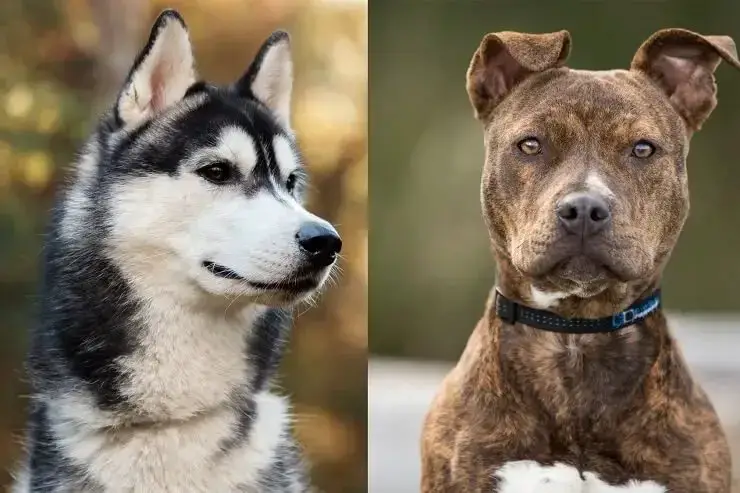
From Adobe Stock
The Pitsky, a dynamic and charismatic hybrid, emerges from a fascinating blend of two distinct and popular breeds.
Understanding the Pitsky begins with delving into the origins of its parent breeds. Each breed brings its own rich history and distinctive characteristics to this unique cross.
The American Pit Bull Terrier
Originating in the 19th century, the American Pit Bull Terrier was bred in the United Kingdom before making its way to the United States.
Initially bred for bull-baiting, a now-outlawed blood sport, these dogs were later used for farm work, hunting, and as family companions.
Renowned for their strength, courage, and unwavering loyalty to their families, Pit Bulls have overcome a troubled history to become beloved pets. Their resilience and affectionate nature have made them a favored choice for crossbreeding.
The Siberian Husky
The Siberian Husky’s story begins in Northeast Asia, where they were bred by the Chukchi people as sled dogs capable of enduring long distances in harsh, cold environments.
This breed was introduced to Alaska in the early 20th century for sled-dog racing, quickly gaining popularity in North America.
Known for their stunning appearance, intelligence, and independent spirit, Huskies have a reputation for being both energetic and good-natured, traits they pass on to their Pitsky offspring.
The Emergence of the Pitsky
The Pitsky as a distinct crossbreed began to gain recognition in the late 20th or early 21st century. This period marked an increased interest in designer dogs, where breeders aimed to blend the physical traits and temperaments of two purebreds. The Pitsky was part of this trend, created to combine the Husky’s endurance and beauty with the Pit Bull’s strength and loyalty.
Today, the Pitsky is celebrated for its unique combination of physical and behavioral traits. This breed has not only inherited the striking looks and robust health of its parent breeds but also their affectionate and protective nature.
The Pitsky’s growing popularity can be attributed to its versatility as a family pet and companion dog. Their adaptable nature makes them suitable for various lifestyles, from active outdoor enthusiasts to those seeking a playful and affectionate family member.
The Pitsky’s distinctive appearance and friendly demeanor have also made them a favorite subject on social media, further boosting their popularity and recognition as a distinct hybrid breed.
Physical Appearance of the Pitsky
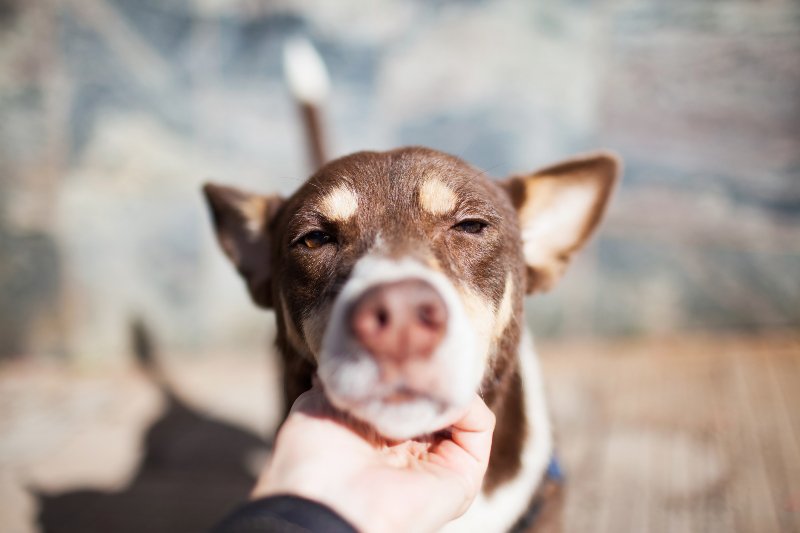
From Adobe Stock
The pitsky, as a hybrid breed, exhibits a fascinating combination of features from the American Pit Bull Terrier and the Siberian Husky. This mix results in a dog that boasts a unique, captivating look, setting it apart from other breeds.
A Robust and Agile Build
Observing Pitskies, one can’t help but be impressed by their robust build. These dogs often inherit the muscular frame of the Pit Bull, evident in their broad shoulders and strong legs. This muscularity is not just for show; it equips them with remarkable agility and stamina. They’re as adept at sprinting across an open field as they are at navigating a hiking trail.
Yet, they also possess the Husky’s sleeker, more streamlined body. This duality in build allows the Pitsky to move with a blend of power and grace. It’s a sight to behold when they’re in motion, whether chasing a ball or simply trotting along on a walk.
The Enchanting Eyes of the Pitsky
The eyes of the Pitsky are a feature that consistently draws attention. Many inherit the Husky’s almond-shaped eyes, which can be brown, blue, or even a combination of both – a condition known as heterochromia, which is quite mesmerizing. These eyes don’t just add to their aesthetic appeal; they are windows into the dog’s soul, expressive and full of life.
This intense gaze reflects their intelligence and alertness, traits they’ve inherited from both parent breeds. The way a Pitsky looks at you can often feel like they understand more than they let on, a quality that Husky and Pit Bull owners cherish in their pets.
The Versatile Coat
The Pitsky’s coat is another area where their hybrid nature shines. The coat can vary significantly from one dog to another, depending on which parent’s genes are more dominant. Some Pitskies have shorter, denser coats like the Pit Bull, making them more suitable for warmer climates. Others inherit the Husky’s thicker, fluffier coat, ideal for colder environments.
In terms of color, the variety is just as impressive. From the classic greys and whites of the Husky to the vibrant brindles, blacks, and even reds of the Pit Bull, Pitskies display a wide range of beautiful coat colors. This diversity in their coat makes each Pitsky uniquely attractive.
Size and Weight: A Range to Suit All
Pitskies are typically medium to large dogs, but there is considerable variation in their size and weight. They can weigh anywhere from 30 to 70 pounds, and some even reach up to 80 pounds. Their height usually ranges from 20 to 25 inches at the shoulder. This variation means that Pitskies can fit comfortably into a variety of homes and lifestyles.
From my experience, smaller Pitskies are often as energetic and playful as their larger counterparts, enjoying activities like fetch and tug-of-war.
On the other hand, larger Pitskies tend to display a gentle, calm demeanor, making them great companions for long walks or relaxing evenings at home. Regardless of their size, each Pitsky brings its own unique personality and charm to the table.
Pitsky Personality and Temperament
Delving into the personality and temperament of the Pitsky is like opening a treasure chest of diverse traits, each more endearing than the last. They embody a rich mix of characteristics from their Siberian Husky and American Pit Bull Terrier lineage, creating a companion who’s both intriguing and delightful.
A Loyal and Loving Companion
In my time with Pitskies, their loyalty always stands out. These dogs develop strong, unbreakable bonds with their families. They’re not just pets; they become integral members of the household.
Their affection is heartwarming – always ready for a snuggle, they seem to have an innate sense to comfort you when you need it most. This mirrors the Pit Bull’s renowned dedication and love for their human companions.
But it’s not just about their loyalty. Pitskies are incredibly loving, fitting seamlessly into family life. They’re the type of dog that thrives on being involved in all family activities, whether it’s a quiet movie night or an energetic day at the beach. Their ability to empathize and connect with human emotions is nothing short of amazing.
Energetic and Playful
If there’s one thing I’ve learned about Pitskies, it’s that they’re a bundle of energy. This is a breed that loves to play and needs a good amount of exercise. They’re perfect for those who lead an active lifestyle. I’ve spent countless hours playing fetch and running with Pitskies, and their stamina never ceases to amaze me.
But it’s not just physical exercise they crave; mental stimulation is just as important. Pitskies are smart, and they love challenges. Whether it’s learning new tricks or solving puzzle toys, engaging their minds is key to keeping them happy. It’s a joy to see the wheels turning in their head as they work through a new challenge.
Social and Friendly
Pitskies usually have a social butterfly side to them. They’re generally outgoing and enjoy the company of both humans and other dogs. I’ve taken Pitskies to dog parks and watched them make friends with ease, their tails wagging in excitement. However, their sociability can vary, and some can be a bit shy or reserved in new situations.
That’s why early socialization is crucial. It helps them build confidence and ensures they grow up to be well-adjusted adults. A well-socialized Pitsky is a pleasure in any setting, from crowded parks to cozy family gatherings.
Barking Tendencies
Barking is an interesting topic with Pitskies. Some inherit the Husky’s love for vocalization. I’ve known Pitskies who would ‘talk’ through howls and barks, which can be quite entertaining, though a bit noisy at times.
Then there are Pitskies who are more on the quiet side, similar to many Pit Bulls. These dogs might bark to alert you but aren’t prone to unnecessary noise. Training and understanding their communication style are key. It’s about recognizing when they’re barking out of boredom, excitement, or alertness, and responding appropriately.
Pitsky Care
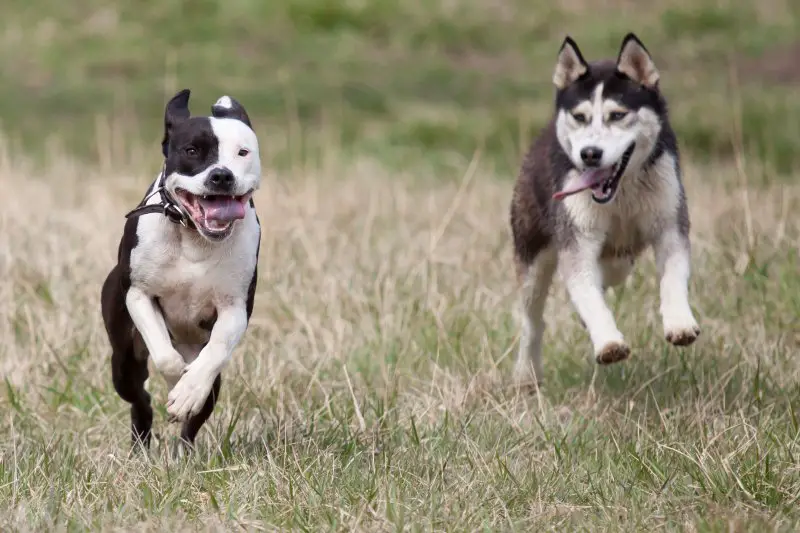
From Adobe Stock
Caring for a Pitsky is like embarking on an exciting journey full of energy, love, and a few surprises along the way. Here’s a quick guide on how you can ensure they live healthy and happy lives.
Exercise and Activity
Let’s talk exercise. Pitskies are little bundles of energy. They need regular walks, runs, and playtime to stay happy. I’ve seen how a good game of fetch or a jog can light up their day.
Mixing up their routine with some agility training or brain games keeps things interesting for them. It’s not just about tiring them out physically; you’ve got to keep their minds active too.
Without enough exercise, Pitskies can get a bit mischievous. I remember one who turned into a sneaky sock thief when he got bored! Regular activity helps keep those naughty behaviors in check and ensures your Pitsky stays a well-behaved member of your family.
Diet and Nutrition
Now, onto their diet. These dogs do well on good-quality dog food, but remember, every Pitsky is different. Some might need more food, especially the larger ones, while others might need less. Keeping an eye on their diet, especially treats, is key. Nobody likes a chubby Pitsky!
Adult Piskies should be fed 2 to 3 cups of medium-sized dog food per day, split into two different meals. The exact amount varies depending on size, metabolism, energy level, and age.
Pitsky Puppies require more food, around 4 to 5 cups per day split across three separate meals. Gradually reduce the amount as the puppies grow into adulthood.
Regular vet visits are great for keeping track of their diet and weight. I always advise against free-feeding; measuring their meals helps prevent overeating. A well-fed Pitsky is a content Pitsky, and who doesn’t love a happy, healthy dog?
Grooming and Hygiene
Grooming a Pitsky can actually be quite fun. Whether they have a thick Husky coat or a shorter Pit Bull one, regular brushing is a must. It’s a great way to bond with your dog, and most Pitskies love the attention. Baths are needed but not too often – you don’t want to dry out their skin.
Don’t forget about their nails and teeth. Keeping their nails trimmed and teeth clean is super important for their overall health. Plus, dental treats are always a big hit – it’s like a snack and a toothbrush in one!
Common Health Concerns Among Pitskies
Pitskies are a relatively healthy mixed breed, though these dogs are prone to the health problems that frequently affect their parent breeds.
Congenital Cardiac Disease
Many Pitskies may be affected by congenital cardiac disease, an abnormality in the heart present from birth. This condition often manifests in symptoms such as difficulty breathing, unusual tiredness, persistent coughing, and exercise issues. Treatment is tailored to the specific defect, its severity, and the dog’s age.
- Schedule regular veterinary visits for early detection and monitoring.
- Watch for signs like labored breathing or reduced tolerance for exercise.
- Follow your vet’s recommendations for medication and specialized care.
- Keep your Pitsky at a healthy weight to ease the burden on their heart.
Patella Luxation
This condition is seen when a Pitsky’s kneecap dislocates, leading to discomfort, joint aches, and sometimes a hopping gait. Patella luxation can cause lameness and may require physiotherapy, rest, or even surgery for correction.
- Maintain a healthy weight to minimize stress on the joints.
- Include gentle, regular exercises to strengthen the muscles around the knee.
- Steer clear of high-impact activities that could worsen the condition.
- Surgical intervention may be necessary in severe cases.
Progressive Retinal Atrophy
This inherited eye disease, leading to eventual blindness, is a significant concern for Pitskies. Although there is no cure for Progressive Retinal Atrophy, early genetic screening can help identify the risk before breeding.
- Ensure genetic testing for PRA, particularly if breeding your Pitsky.
- Regular eye exams can help monitor the progression.
- Adjust your home and routine to accommodate your Pitsky’s vision loss.
- Stay alert to changes in behavior that might indicate vision impairment.
Hip Dysplasia
A common issue for Pitskies, this condition occurs when the hip joint doesn’t develop properly, causing pain, limping, and a wobbly gait. Witnessing a dog with hip dysplasia can be distressing. The treatment plan often involves weight management, physical therapy, supplements, and sometimes surgery.
- Encourage exercise routines that are gentle on the hips.
- Keep your Pitsky’s weight under control to alleviate joint pressure.
- Consider adding joint supplements to their diet as recommended by your vet.
- In severe cases, explore surgical options with your veterinarian.
Degenerative Myelopathy
This serious condition affects the spinal cord, leading to symptoms like leg weakness and eventually paralysis. There is currently no cure for degenerative myelopathy, making management and supportive care crucial.
- Regular check-ups with your vet can help monitor for early signs.
- Implement supportive care, including mobility aids, as the disease progresses.
- Engage in physical therapy to maintain muscle strength as long as possible.
- Focus on providing comfort and a high quality of life.
Cataracts
Cataracts cause clouding in the eye’s lens, leading to vision impairment. Symptoms include changes in eye color and increased clumsiness. Fortunately, surgery can effectively remove cataracts, restoring vision.
- Regular eye checks are essential for early detection.
- Surgical removal is a viable option for restoring vision.
- Modify your home to prevent accidents as their vision changes.
- Watch for changes in behavior that could indicate vision problems.
Hypothyroidism
In this condition, the thyroid gland doesn’t function properly, leading to symptoms like weight gain, excessive hunger, intolerance to colds, lethargy, and excessive shedding. Treatment for hypothyroidism typically involves thyroid hormone replacement therapy.
- Regular blood tests to monitor thyroid function are important.
- Consistent administration of prescribed medication is crucial.
- Keep an eye on changes in appetite, energy levels, and overall demeanor.
- Regular health check-ups are key to managing this condition.
Glaucoma
Glaucoma in Pitskies is marked by a buildup of pressure in the eye. Symptoms include a hazy appearance in the eye, redness, dilated pupils, excessive tearing, and in severe cases, blindness. Treatments often involve surgical intervention and medicated eye drops.
- Routine veterinary eye exams are crucial for early detection.
- Prompt treatment with surgery or medicated drops can help manage the condition.
- Monitor your Pitsky for signs of discomfort or changes in vision.
- Stay vigilant for behavioral changes that may indicate eye pain or vision loss.
How to Train a Husky Pitbull Mix
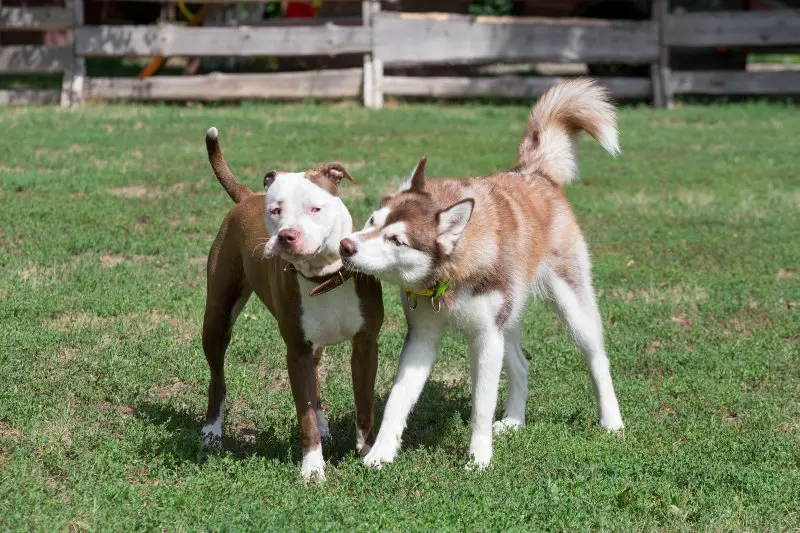
From Adobe Stock
Training a Husky Pitbull is a journey that requires patience, consistency, and an understanding of this unique breed’s characteristics. Pitskies can be both a joy and a challenge to train.
Establishing Leadership
- Consistency is Key: Pitskies respond well to consistent leadership. They need to understand that you’re in charge, but this should be established through positive reinforcement and firm, yet gentle guidance. Avoid harsh methods as they can lead to mistrust and behavioral issues.
- Routine and Structure: Implementing a structured routine helps these dogs feel secure. Regular feeding times, walks, and training sessions create a predictable environment, which is essential for their learning and development.
Positive Reinforcement Techniques
- Rewards Work Wonders: Like their parent breeds, Pitskies are motivated by rewards. Use treats, praise, and playtime as incentives for good behavior. They respond enthusiastically to positive reinforcement, which strengthens your bond and makes training sessions enjoyable.
- Avoid Negative Punishments: Negative or harsh punishments can be counterproductive. Instead, focus on redirecting undesirable behaviors and reinforcing the behaviors you want to see.
Socialization and Exposure
- Early Socialization is Crucial: Expose your Pitsky to different people, animals, environments, and sounds from a young age. This helps them become well-adjusted and confident adults. Socialization reduces anxiety and fear-based behaviors, making them more adaptable and sociable.
- Continuous Exposure: Keep introducing new experiences even as they grow. This ongoing exposure is vital for maintaining their social skills and ensuring they’re comfortable in various situations.
Focus on Obedience Training
- Basic Commands First: Start with basic commands like ‘sit’, ‘stay’, ‘come’, and ‘heel’. Mastery of these basics creates a foundation for more advanced training and ensures they can behave well in different settings.
- Progress to Advanced Training: Once they’ve mastered the basics, you can move on to more challenging commands and tricks. Pitskies enjoy learning and are capable of impressive feats due to their intelligence and agility.
Addressing Stubbornness and Independence
- Patience with Stubbornness: Sometimes, the Husky’s independent nature can make a Pitsky seem stubborn. Patience and persistence are key. If they’re resistant to learning a particular skill, take a break and try again later.
- Engaging Training Sessions: Keep training sessions short, fun, and engaging. Longer sessions can lead to boredom and loss of attention. Mixing in play with training keeps them interested and eager to participate.
The Cost of Pitsky Ownership
Owning a Pitsky is a rewarding experience, but it’s important to be aware of the financial commitment involved.
Initial Costs
- Adoption or Purchase Price: Depending on the source, you could be looking at anywhere from $300 to $800 for adoption fees or up to $1,500 if purchasing from a reputable breeder.
- Initial Vet Visit and Vaccinations: The first vet visit, including initial vaccinations, can range from $100 to $300, depending on your location and the vet’s rates.
Ongoing Expenses
- Food and Treats: Quality dog food and treats can cost around $40 to $80 per month, varying with the size and dietary needs of your Pitsky.
- Routine Vet Care: Annual vet check-ups and vaccinations typically run about $200 to $400.
Training and Socialization Costs
- Training Classes: Basic training classes might cost between $50 to $200, a worthy investment for your Pitsky’s behavior and social skills.
- Socialization Opportunities: Activities like doggy daycare or playgroups could add an extra $100 to $300 monthly, depending on the frequency and the services offered.
Grooming and Maintenance
- Grooming Supplies or Services: Professional grooming sessions can range from $30 to $100 per visit. Home grooming supplies might initially cost around $50 to $100.
- Flea and Tick Prevention: Expect to spend about $200 to $300 annually on flea and tick prevention products.
Unexpected Costs
- Emergency Vet Visits: It’s wise to set aside at least $1,000 to $2,000 for emergencies. Vet bills can escalate quickly in unforeseen situations.
- Health Insurance: Monthly premiums for pet insurance can vary widely, from $30 to $70, depending on the coverage.
Toys and Accessories
- Toys and Play Equipment: Annually, you might spend $50 to $150 on toys, depending on how rugged they need to be.
- Beds, Leashes, and Collars: High-quality beds, leashes, and collars can set you back by about $100 to $200 initially.
Frequently Asked Questions About Pitskies
How long do Pitskies typically live?
Pitskies have a lifespan of approximately 12 to 15 years. This can vary based on genetics, health, and care.
Are Pitskies good with children and other pets?
Pitskies are generally great with kids and can coexist peacefully with other pets, especially if socialized early. They’re known for their playful and affectionate nature, but supervision and proper introductions are always recommended.
Can Pitskies live in apartments?
Pitskies can adapt to apartment living but require ample exercise and mental stimulation. Daily exercise and regular outings are essential for a Pitsky in an apartment setting.
Are Pitskies prone to separation anxiety?
Pitskies may experience separation anxiety if left alone for too long. They are social animals that thrive on companionship and do best when they’re not left alone for extended periods.
Are Pitskies easy to train?
Pitskies are intelligent and learn quickly, but their independent nature can sometimes be mistaken for stubbornness. With consistent, positive training methods, they can be trained effectively. Early socialization and obedience training are recommended.
So, Is a Pitsky the Right Dog For You?
Deciding if a Pitsky is the right dog for you involves weighing their characteristics against your lifestyle, environment, and what you’re looking for in a canine companion. Let’s break it down to help you make an informed decision.
Who Is the Pitsky Suitable For
- Active Individuals or Families: If you lead an active lifestyle, love the outdoors, and enjoy being physically active, a Pitsky could be the perfect fit. Their high energy and enthusiasm for exercise make them great companions for hiking, running, and other outdoor adventures.
- Experienced Dog Owners: If you have prior experience in dog training and handling, especially with high-energy breeds, you’ll likely find a Pitsky a rewarding challenge. Their intelligence and learning ability can be a delight for someone who enjoys engaging in consistent, positive reinforcement training.
- Those Looking for a Loyal and Affectionate Pet: Pitskies are known for their loyalty and affection. They form strong bonds with their owners and are great for someone looking for a companion who is both playful and loving.
- Families with Older Children: Given their playful nature and size, Pitskies can be great pets for families with older children who understand how to interact safely and respectfully with dogs.
Who Isn’t the Pitsky Suitable For
- First-Time Dog Owners: If you’re new to dog ownership, a Pitsky might be a bit of a challenge. Their energy levels and need for consistent training and socialization can be overwhelming for someone without prior experience.
- Busy Professionals: If you have a hectic schedule or are away from home frequently, a Pitsky might not be the best choice. They thrive on companionship and activity and can develop separation anxiety if left alone for long periods.
- Those Seeking a Low-Energy Companion: If you prefer a more laid-back, low-energy dog, a Pitsky may not be the right fit. They require a lot of exercise and mental stimulation to stay happy and healthy.
- Residents of Apartments with Breed Restrictions: Given the Pit Bull heritage, Pitskies may not be allowed in certain apartments or housing communities with breed restrictions. It’s crucial to check these details before deciding to bring a Pitsky into your home.
More American Pit Bull Terrier and Siberian Husky Mixes
Want an American Pit Bull Terrier mix or Siberian Husky mix, but aren’t keen on the Pitsky? Check out these other hybrid dog breeds:
American Pit Bull Terrier Mixes
- German Shepherd Pit Bull Mix
- Golden Retriever Pit Bull Mix
- Pit Bull Mastiff Mix
- Pit Bull Boxer Mix
- Pit Bull Lab Mix
- Rottweiler Pit Bull Mix
- PitBull Corgi Mix
- Pit Bull Husky Mix
- Pit Bull Dachshund Mix

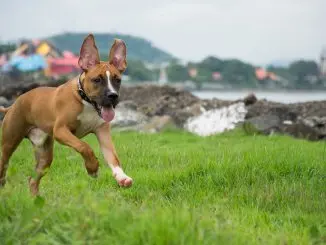
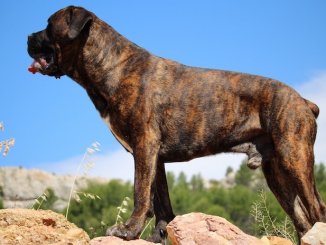
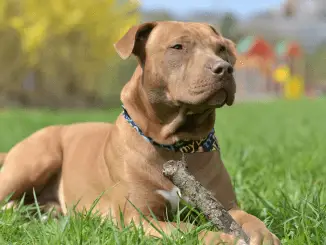
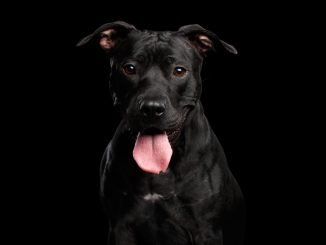
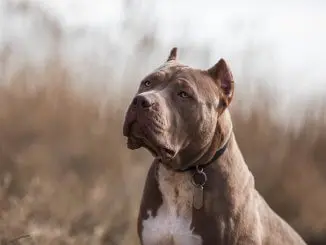

My dog is American Staf.,and Siberian Husky. Is she a Pitski?
Her dna was 50/50.